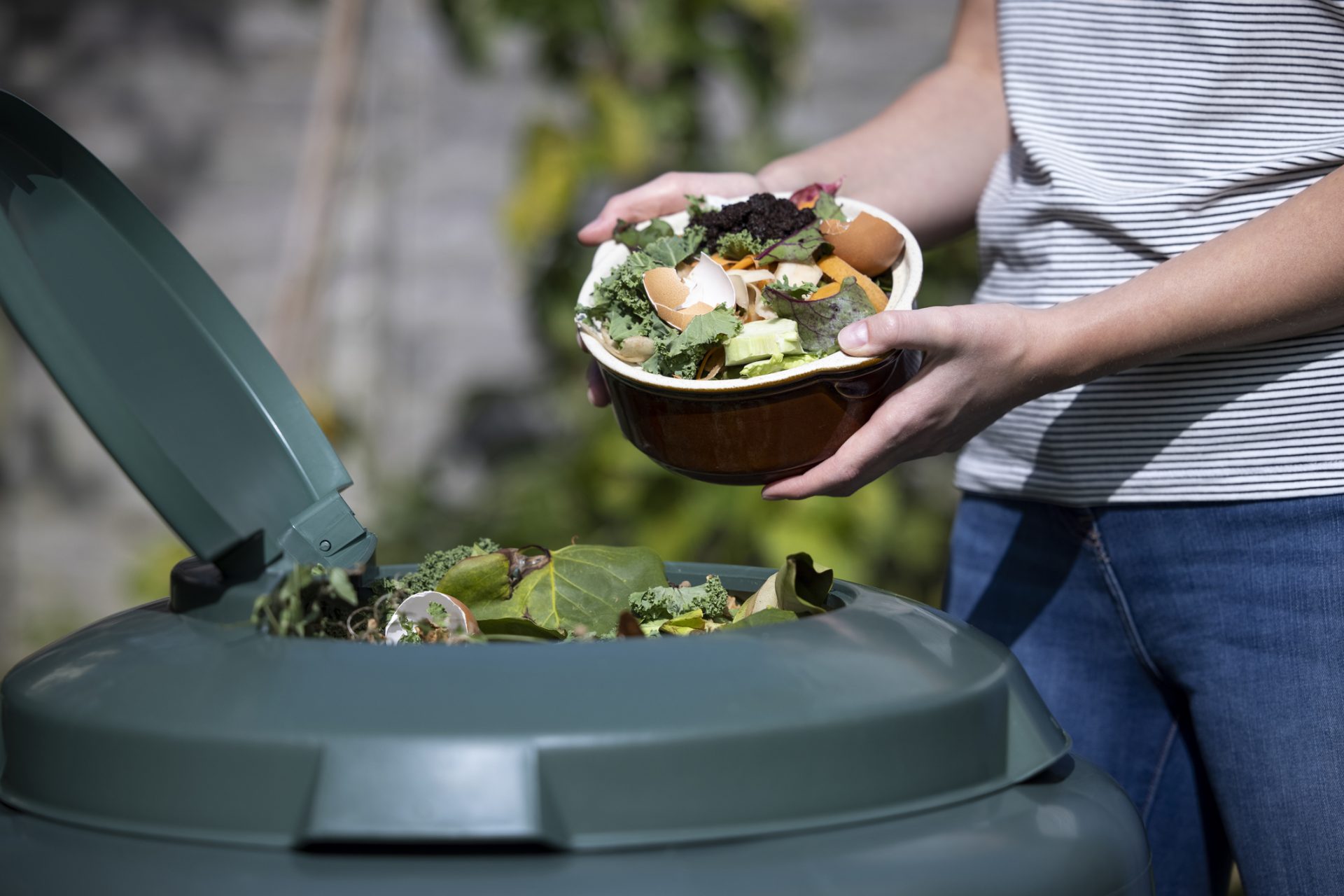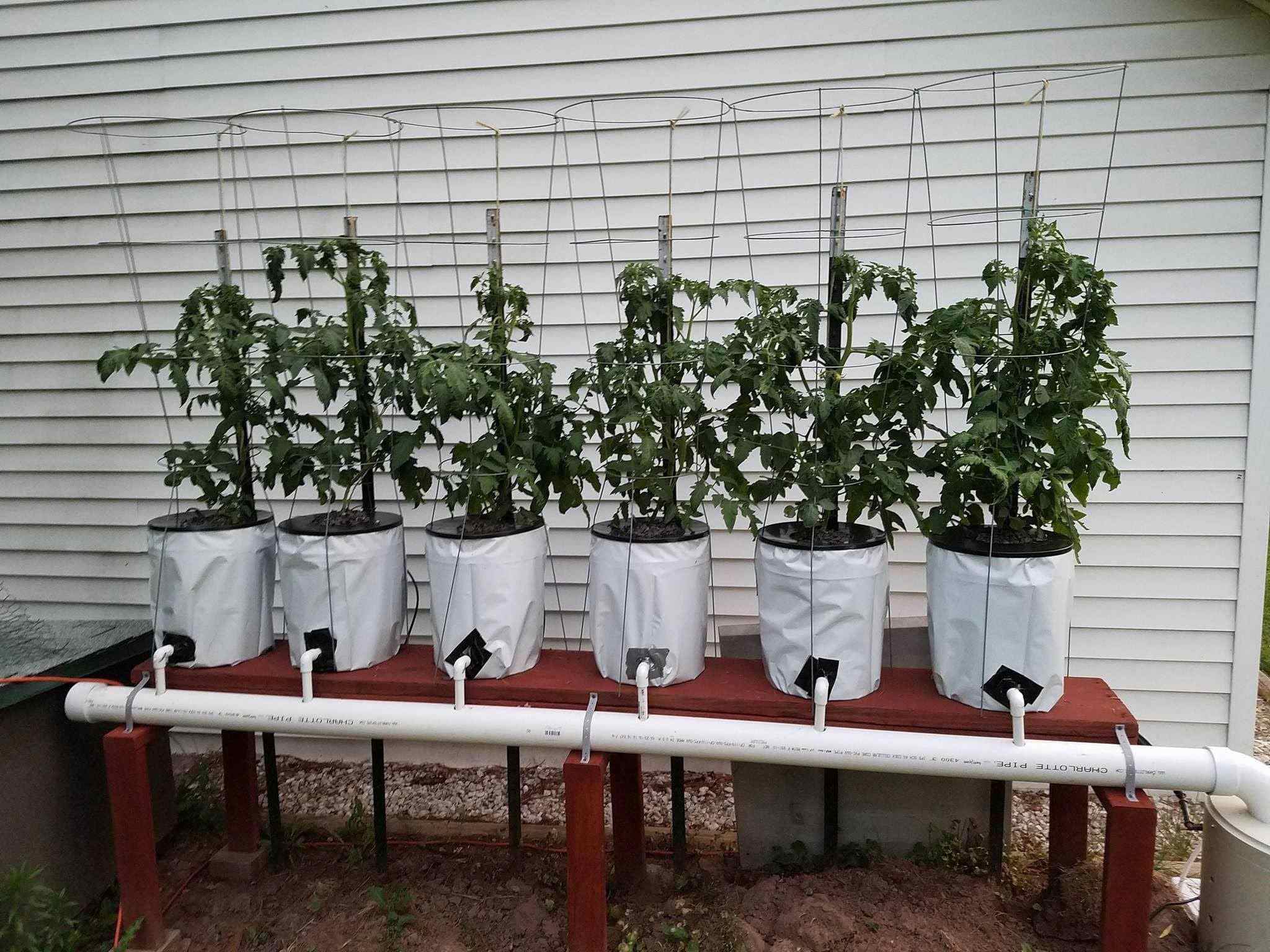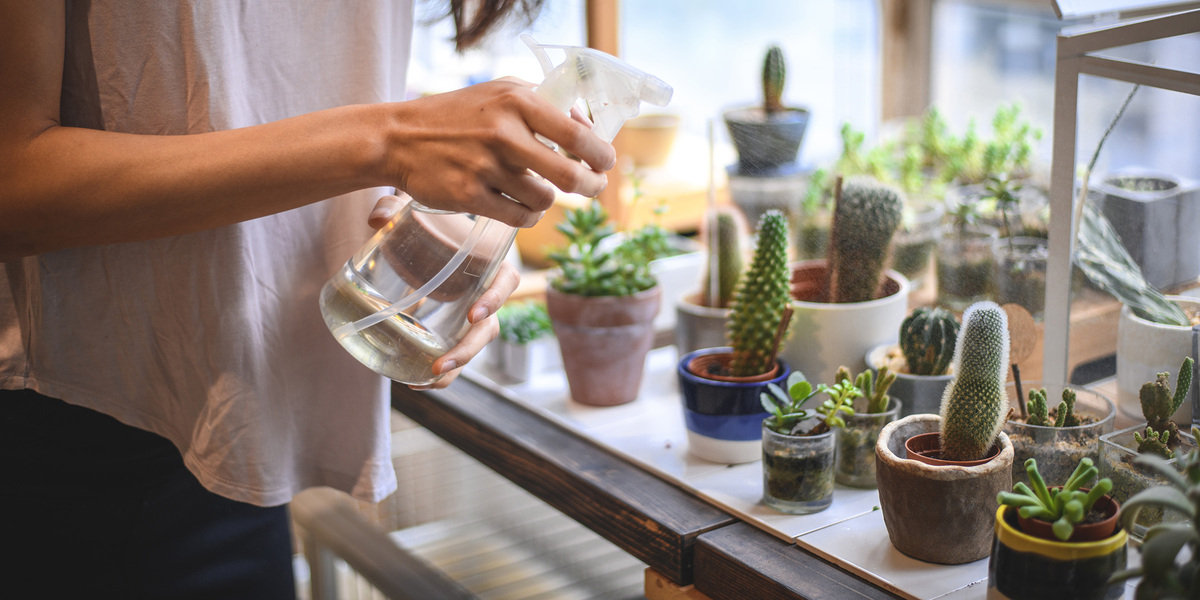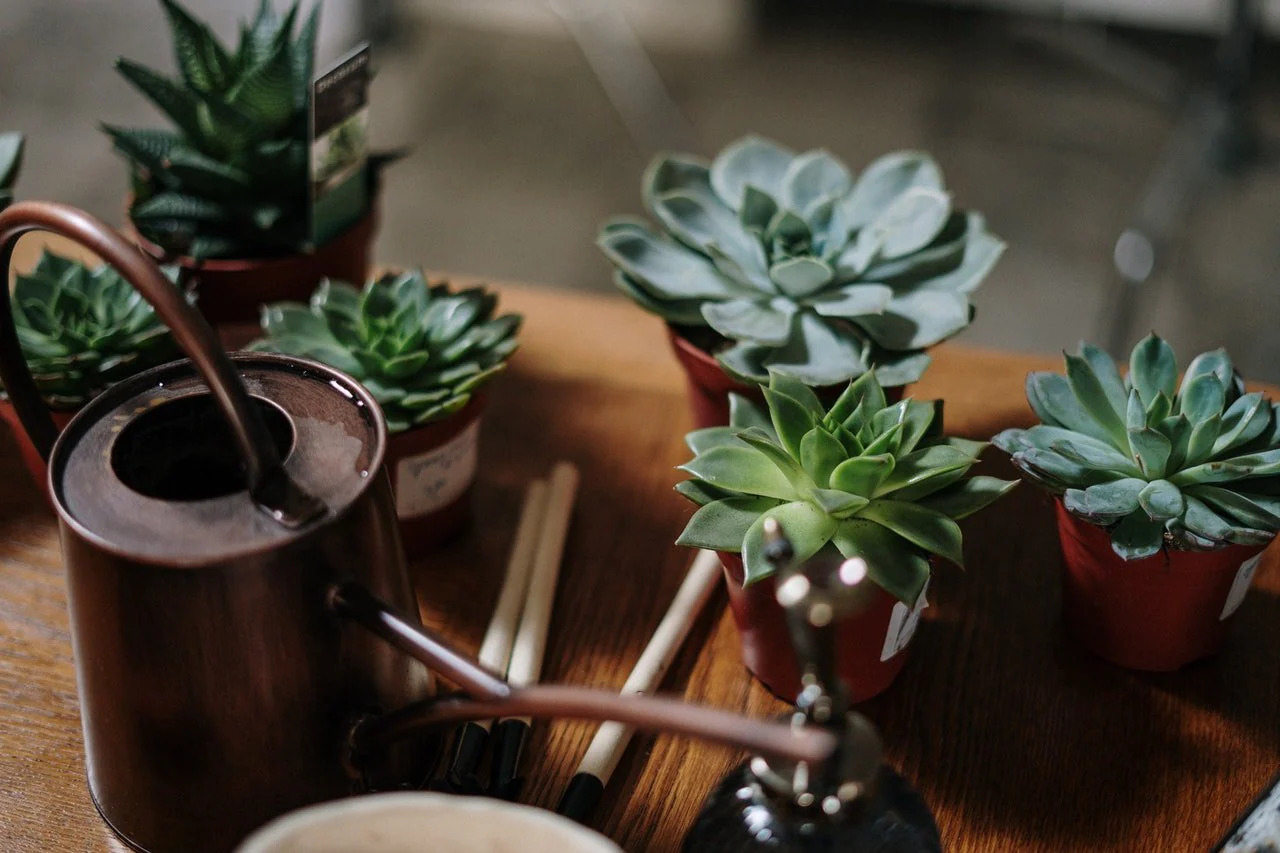Home>Gardening Tips and Tricks>Eco-Friendly Gardening>How Do I Compost At Home


Eco-Friendly Gardening
How Do I Compost At Home
Modified: January 22, 2024
Learn how to compost at home and reduce waste with eco-friendly gardening methods. Start your own compost pile for a greener and healthier garden.
(Many of the links in this article redirect to a specific reviewed product. Your purchase of these products through affiliate links helps to generate commission for Chicagolandgardening.com, at no extra cost. Learn more)
Table of Contents
- Introduction
- Benefits of Composting at Home
- Getting Started with Composting
- Choosing a Composting Method
- Selecting the Right Location
- Collecting and Preparing Compostable Materials
- Building Your Compost Pile
- Maintaining Your Compost
- Troubleshooting Common Composting Issues
- Using Your Finished Compost
- Conclusion
Introduction
Welcome to the world of eco-friendly gardening! If you’re passionate about sustainable living and want to make a positive impact on the environment, then composting at home is an excellent practice to adopt. Composting is the process of breaking down organic materials, such as kitchen scraps and yard waste, into a nutrient-rich soil amendment known as compost. This natural and organic product can be used to enrich your garden soil, improve plant health, and reduce the need for chemical fertilizers.
Composting at home not only benefits your garden and plants but also contributes to a healthier planet. By diverting organic waste from landfills, you can reduce methane emissions, which are a significant contributor to climate change. Additionally, composting helps conserve water by improving soil’s ability to retain moisture, reduces the need for synthetic pesticides and fertilizers, and promotes biodiversity.
Getting started with composting doesn’t require a vast amount of space or specialized equipment. Whether you have a sprawling backyard or a small balcony, there are various methods that can be adapted to fit your needs. Plus, composting can be a fun and rewarding activity for the whole family to engage in, fostering a deeper connection with nature and the food we consume.
Throughout this article, we will explore different composting methods, discuss how to choose the right location, provide guidance on collecting and preparing compostable materials, and offer tips on building and maintaining your compost pile. We’ll also address common composting issues you may encounter and share how to use your finished compost effectively.
So, if you’re ready to embark on a journey towards a greener and more sustainable lifestyle, let’s dive into the world of home composting and discover how to turn your kitchen scraps and yard waste into black gold for your garden.
Benefits of Composting at Home
Composting at home offers a multitude of benefits, both for your garden and the environment. Let’s explore some of the advantages that come with this eco-friendly gardening practice:
- Reduces Waste: One of the primary benefits of composting at home is that it allows you to divert kitchen scraps and yard waste from ending up in landfills. Organic waste makes up a significant portion of municipal solid waste, and when it decomposes in landfills, it releases harmful methane gas. By composting at home, you’re actively reducing the amount of waste sent to landfills and minimizing methane emissions.
- Improves Soil Health: Compost is an exceptional soil amendment that enhances soil structure, texture, and fertility. When added to garden soil, compost improves its ability to retain moisture, promotes aeration, and increases nutrient availability for plants. It also encourages the growth of beneficial microorganisms, which help break down organic matter and create a healthy soil ecosystem.
- Enriches Plants: The nutrients present in compost, such as nitrogen, phosphorus, and potassium, are essential for plant growth and development. By incorporating compost into your garden beds or potting mix, you provide a rich source of nutrients that benefit your plants. Compost also acts as a natural slow-release fertilizer, providing a steady supply of nutrients over time.
- Reduces Chemical Use: When you amend your soil with compost, you reduce the need for synthetic fertilizers and pesticides. Compost supplies a balanced and organic source of nutrients while improving the soil’s overall health. By reducing chemical use, you create a safer and more environmentally-friendly garden.
- Conserves Water: Compost improves the water-holding capacity of soil, reducing the need for frequent watering. The organic matter in compost helps retain moisture, preventing it from evaporating too quickly. Conserving water is not only beneficial for the environment but also saves you time and money on watering your garden.
- Promotes Sustainability: Composting at home aligns with sustainable living practices by closing the loop on the food cycle. By recycling your kitchen scraps back into the soil, you complete the cycle of nourishing your plants and crops. This sustainability mindset extends beyond your garden and contributes to a more sustainable planet.
These are just a few of the many benefits of composting at home. By adopting this eco-friendly gardening practice, you can make a positive impact on the environment, improve the health of your garden, and create a more sustainable future.
Getting Started with Composting
Ready to start composting? Let’s go through the essential steps to get you on your way to creating nutrient-rich compost for your garden:
- Educate Yourself: Take the time to familiarize yourself with the basics of composting. Understand what materials can and cannot be composted, learn about the different composting methods available, and research the specific needs and requirements of the plants you intend to fertilize with compost. This knowledge will set you up for success as you begin your composting journey.
- Select a Composting Method: Choose the composting method that best suits your space, lifestyle, and available resources. There are several options to consider, such as traditional compost bins, vermicomposting (using worms to break down organic matter), tumblers, or even simple pile composting. Each method has its own set of advantages and considerations, so pick the one that aligns with your specific needs.
- Gather Composting Materials: To create compost, you’ll need a mix of carbon-rich “browns” and nitrogen-rich “greens.” Browns include items like dried leaves, straw, and shredded paper, while greens consist of kitchen scraps, fresh grass clippings, and plant trimmings. Collect these materials from your yard and kitchen or consider connecting with local farmers or neighbors to obtain additional compostable materials.
- Prepare Compostable Materials: Before adding materials to your compost pile, it’s important to prepare them properly. Chop or shred large items, such as branches or vegetable scraps, to accelerate the decomposition process. This allows microorganisms to break down the materials more effectively and helps maintain a balanced compost pile.
- Build Your Compost Pile: Start by selecting a suitable location for your compost pile or bin. It should be in a well-drained area, easily accessible, and preferably close to a water source. Layer your brown and green materials, alternating between them to maintain a balanced carbon-to-nitrogen ratio. Aim for a pile that is roughly three feet tall and three feet wide to ensure efficient composting.
- Maintain Your Compost: Regularly monitor and maintain your compost pile to ensure proper decomposition. This involves turning the pile every few weeks to aerate it, adding water to maintain moisture levels, and monitoring the temperature, aiming for an optimal range of 120-150°F (49-60°C). Adjust the pile’s carbon-to-nitrogen ratio by adding more browns or greens as necessary.
- Patience and Time: Composting is a natural process that takes time, so be patient and allow your compost to mature. The decomposition rate can vary depending on factors such as temperature, moisture, and the size of the materials used. With time and proper management, you’ll eventually have nutrient-rich compost ready to use in your garden.
Remember, composting is a learning process, and it may take some trial and error to find the perfect balance for your compost pile. Don’t be discouraged by setbacks or challenges along the way; instead, view them as opportunities to learn and improve your composting skills.
Now that you have a clear understanding of how to get started with composting, it’s time to put your knowledge into action and take the first steps towards creating your own organic, nutrient-rich compost.
Choosing a Composting Method
When it comes to composting, there are several methods to choose from. Each method has its own advantages and considerations, so you’ll want to select the one that best fits your specific needs and circumstances. Here are some popular composting methods to consider:
- Traditional Compost Bins: Traditional compost bins are a common and versatile option. They can be made of various materials, including wood, plastic, or wire mesh, and provide a contained space for your composting materials. These bins offer good airflow and are suitable for both small and large-scale composting. They also help keep pests and animals out of your compost pile.
- Vermicomposting: Vermicomposting utilizes worms, typically red wigglers, to break down organic matter. This method is ideal for those with limited space, such as apartment dwellers or those with small gardens. Worms consume the organic material and produce nutrient-rich castings, also known as worm castings, which make excellent fertilizer for plants.
- Compost Tumblers: Compost tumblers are rotating containers that provide a convenient way to turn and aerate your compost. These bins are often elevated and have a lid to keep pests out. Tumblers make it easier to mix the composting materials and accelerate the decomposition process. They are well-suited for those who have limited physical mobility or prefer a neater and more contained composting system.
- Simple Pile Composting: For those with ample outdoor space, simple pile composting can be a straightforward and cost-effective method. This method involves creating a compost pile directly on the ground without the need for a bin or enclosure. It allows for ample airflow and natural decomposition of organic matter. However, it requires more frequent turning and may attract pests, so proper management is essential.
- Bokashi Composting: Bokashi composting is an anaerobic composting method that relies on the use of a special composting mixture called bokashi bran. This mixture, which usually contains effective microorganisms, is added to a sealed container along with the organic waste. The fermentation process breaks down the organic matter, and the resulting bokashi can be buried in the soil or further composted.
Consider factors such as available space, the amount of materials you plan to compost, ease of maintenance, and personal preferences when selecting your composting method. Keep in mind that you can also combine different methods to suit your needs. For example, you can use a traditional compost bin for yard waste and a vermicomposting system for kitchen scraps.
It’s essential to choose a composting method that aligns with your lifestyle and resources to ensure a successful and enjoyable composting experience. Selecting the right method will set the foundation for creating a thriving compost pile and reaping the benefits of nutrient-rich compost in your garden.
Selecting the Right Location
Selecting the right location for your compost pile or bin is crucial for successful composting. The location you choose will determine factors such as airflow, accessibility, and overall convenience. Here are some considerations to keep in mind when selecting a location for your composting setup:
- Accessibility: Choose a location that is easily accessible for adding and removing compost materials. This will make the process more convenient and encourage you to regularly tend to your compost pile.
- Sunlight: While composting can occur in both shade and sunlight, a partially sunny location is ideal. Sunlight helps to heat up the compost pile, promoting faster decomposition. However, if you live in a hot climate, you may prefer a partially shaded spot to prevent the compost from becoming too dry.
- Drainage: Ensure that the location has good drainage to prevent rainwater from pooling in the compost pile. Excessive moisture can lead to anaerobic conditions and unpleasant odors. If you’re using a compost bin, ensure it has adequate drainage holes.
- Proximity to Water Source: Consider locating your compost pile or bin near a water source, such as a hose or rain barrel. This will make it easier to water your compost when needed, maintaining proper moisture levels for decomposition.
- Neighbors and Pests: Be mindful of your neighbors and select a location that minimizes potential odors or pest concerns. Placing your compost pile away from property boundaries and installing a lid or covering can help prevent any issues.
- Wind Direction: Depending on your climate, wind direction may play a role in selecting the location. If you live in a windy area, consider positioning the compost pile or bin in a location protected from strong winds to prevent the pile from drying out too quickly.
- Space Availability: Evaluate the amount of space available for your composting setup. If you have a large yard, you’ll have more flexibility in choosing a location. However, those with limited space can opt for smaller composting options, such as vermicomposting or compost tumblers.
Keep in mind that it’s important to comply with any local regulations or guidelines regarding composting. Some municipalities may have specific restrictions on bin placement or composting techniques, so be sure to familiarize yourself with the rules in your area.
By considering these factors and selecting a suitable location, you’ll create a conducive environment for composting. Remember, the location of your compost pile or bin should provide the right balance of sunlight, moisture, and accessibility to ensure efficient decomposition and successful composting.
Collecting and Preparing Compostable Materials
Collecting and preparing compostable materials is a crucial step in the composting process. To create nutrient-rich compost, you’ll need a mix of carbon-rich “browns” and nitrogen-rich “greens.” Here’s a guide to help you collect and prepare the right materials for your compost pile:
- Browns: Browns are carbon-rich materials that provide structure and stability to the compost pile. Examples of browns include dried leaves, straw, shredded paper, cardboard, and wood chips. Collect these materials from your yard, a local park, or from your household waste. Shred or chop larger items into smaller pieces to speed up decomposition.
- Greens: Greens are nitrogen-rich materials that supply essential nutrients to the composting process. Kitchen scraps, such as fruit and vegetable peels, coffee grounds, tea leaves, and plant trimmings, are excellent sources of greens. Grass clippings can also be included, but be sure to mix them in sparingly to avoid clumping and odors. To prevent pest issues, avoid adding meat, dairy products, or oily items to your compost.
- Moisture: Moisture is essential for the decomposition of compostable materials. Some greens, such as fruit and vegetable scraps, contribute to the moisture content. However, if your compost pile becomes too dry, add water to ensure proper moisture levels. You should aim for a damp sponge-like consistency in your compost pile.
- Composting Don’ts: While many organic materials are suitable for composting, there are some items that should be avoided. These include diseased plants, weeds with mature seeds, pet waste, treated wood products, and any materials that have been contaminated with pesticides or chemicals. These items can introduce harmful pathogens or toxins into your compost.
- Compostable Packaging: Pay attention to the packaging your food and other products come in. Choose items that are packaged in compostable or recyclable materials whenever possible. This reduces waste and ensures that the packaging can be safely added to your compost pile. Avoid items with non-compostable or non-recyclable components.
- Food Waste Management: Implementing proper food waste management practices is crucial for composting. Store kitchen scraps in a composting container or bin with a lid to reduce odors and keep pests at bay. If you want to accelerate the decomposition process, consider shredding or blending your kitchen scraps before adding them to the compost pile.
- Keep a Balance: Maintaining the right balance of browns and greens is essential for a healthy compost pile. Aim for a ratio of roughly 3 parts brown materials to 1 part green materials. This balance helps regulate the carbon-to-nitrogen ratio, speeds up decomposition, and minimizes potential odors.
Remember, composting is an ongoing process. As you gather compostable materials, store and add them to your compost pile regularly. This will ensure a steady supply of organic matter and a continuous cycle of decomposition.
By paying attention to the types of materials you collect, striking the right balance between browns and greens, and properly managing food waste, you’ll be well on your way to creating nutrient-rich compost for your garden.
Building Your Compost Pile
Building a compost pile involves creating layers of organic materials that will decompose over time. Follow these steps to construct a well-structured and efficient compost pile:
- Choose the Right Location: Select a suitable location for your compost pile, considering factors like accessibility, sunlight, and drainage, as discussed earlier. Ensure there is enough space to accommodate the size of your compost pile.
- Prepare the Ground: If you’re opting for a simple pile composting method without a bin, prepare the ground by clearing any debris or weeds. You can layer the bottom with twigs or straw to promote airflow and drainage.
- Start with a Base Layer: Begin your compost pile with a layer of coarse, carbon-rich brown materials, such as straw or twigs. This helps create airflow and prevents the pile from becoming too compacted.
- Add Alternate Layers: Layer your compostable materials, alternating between brown and green materials. As you add each layer, make sure to moisten it slightly if it is dry. The goal is to maintain a damp sponge-like consistency throughout the pile.
- Maintain the Right Ratio: Aim for a carbon-to-nitrogen ratio of roughly 3 parts brown materials to 1 part green materials. This helps ensure proper decomposition and minimizes odors. Adjust your layering as needed to maintain this balance.
- Consider Adding Activators: To speed up the decomposition process, you can introduce compost activators, such as finished compost, garden soil, or commercially available compost accelerators. These activators provide beneficial microorganisms and enzymes that aid in breaking down the organic matter.
- Avoid Compacting: As you build your compost pile, avoid compacting the materials too tightly. This can restrict airflow and slow down the decomposition process. Instead, loosely layer the materials to promote airflow and microbial activity.
- Repeat the Layering: Continue adding layers of brown and green materials, moistening each layer as you go, until your compost pile reaches a desirable size. A pile that is approximately 3 feet tall and 3 feet wide is optimal for efficient decomposition.
- Cover the Pile (Optional): Covering your compost pile, especially during heavy rain or in colder climates, can help maintain moisture levels and protect the pile from excessive wetness or drying out. Use a tarp or a layer of straw or leaves as a cover.
- Maintain and Monitor: Regularly check your compost pile for moisture levels, turning it every few weeks to promote aeration and decomposition. Adjust the moisture content, add more materials as necessary, and continue the process until you achieve a finished compost product.
Remember that composting is a dynamic process, and the materials in your pile will go through various stages of decomposition. Patience and proper maintenance are key. With time, you’ll have nutrient-rich compost ready to use in your garden.
By following these steps and building your compost pile thoughtfully, you’ll create an environment that supports efficient decomposition and transforms organic waste into a valuable resource for your plants.
Maintaining Your Compost
Maintaining your compost pile is essential to ensure proper decomposition and the creation of nutrient-rich compost. Here are some key steps to keep in mind to effectively maintain your compost:
- Regular Turning: Turn your compost pile every few weeks to promote aeration and accelerate the decomposition process. Use a pitchfork or shovel to carefully mix the materials, bringing the outer layers to the center and the center to the outer edges. Turning the pile also helps distribute moisture and temperature evenly.
- Monitoring Moisture: Moisture is a critical factor in composting. Check the moisture levels of your compost pile regularly, aiming for a damp sponge-like consistency. If the pile is too dry, add water to moisten it. Conversely, if it’s too wet, add dry brown materials to absorb excess moisture.
- Temperature Management: Composting is a process that generates heat as microorganisms break down organic matter. Ideally, the temperature in your compost pile should be between 120-150°F (49-60°C). Monitor the temperature using a compost thermometer and adjust the pile’s moisture and turning frequency accordingly to maintain an optimal temperature range.
- Achieving Balance: Maintaining a proper carbon-to-nitrogen ratio is essential for successful composting. Adjust the ratios of brown and green materials as needed to achieve a balanced mix. If your pile becomes too high in carbon, add more green materials to increase nitrogen content. If it becomes too high in nitrogen, add more brown materials to increase carbon content.
- Avoid Compaction: Avoid compacting the compost pile as it can slow down decomposition and restrict airflow. Ensure that the pile remains loose and aerated to allow oxygen to circulate and support the growth of beneficial microorganisms.
- Managing Odors: Properly managed compost piles should not emit foul odors. If your compost pile develops unpleasant odors, it may be a sign of improper aeration or excess moisture. Make sure to turn the pile more frequently and adjust moisture levels as necessary to mitigate any odors.
- Adding Amendments: Occasionally, you may choose to add amendments to your compost pile to enhance its quality. This can include items such as agricultural lime to balance pH, bone meal to increase phosphorus content, or garden soil to introduce beneficial microorganisms. However, remember that the main focus should be on organic materials and natural decomposition.
- Be Patient: Composting is a gradual process, and it takes time for organic materials to break down completely. The duration of composting can vary depending on factors such as temperature, moisture, and the types of materials used. Be patient and continue to maintain your compost pile until it transforms into dark, crumbly compost.
Regular maintenance and monitoring are key to successful composting. By following these steps and being attentive to the needs of your compost pile, you’ll create an environment that supports efficient decomposition and the creation of nutrient-rich compost for your garden.
Troubleshooting Common Composting Issues
Composting is a natural process, but sometimes challenges and issues may arise. Here are some common composting issues and how to troubleshoot them:
- Foul Odors: If your compost pile has an unpleasant odor, it is likely due to anaerobic conditions or excess moisture. To resolve this issue, turn the pile more frequently to introduce oxygen and improve aeration. Additionally, add dry brown materials to absorb excess moisture and create a better balance.
- Slow Decomposition: If your compost pile is taking longer to decompose, it may be due to an imbalance in carbon-to-nitrogen ratio, insufficient moisture, or inadequate aeration. Adjust the brown and green ratio, ensure proper moisture levels, and turn the pile more frequently to encourage decomposition. Shredding or chopping larger materials can also help speed up the process.
- Pest Infestation: If your compost pile is attracting pests such as rodents or flies, it may be due to the presence of food scraps or an imbalance in the compost pile. To address this issue, bury food scraps deeper within the pile to discourage pests. Ensure proper balance and avoid adding meat, dairy, or oily materials, which can attract pests.
- Excessive Moisture: Excessive moisture can lead to a smelly and slimy compost pile. To address this issue, add dry brown materials to absorb excess moisture and improve aeration. Avoid overwatering and ensure proper drainage. If necessary, cover your compost pile during heavy rain to prevent it from becoming waterlogged.
- Poor Aeration: Insufficient airflow can lead to slow decomposition and an anaerobic compost pile. To improve aeration, turn the pile more frequently to introduce oxygen. Consider adding bulky materials such as twigs or straw to create air pockets within the pile. Make sure the pile is not too tightly packed or compacted.
- Unwanted Weed Growth: If weed seeds or mature weeds are sprouting in your compost, it may be due to insufficient heat during the composting process. Ensure that your compost pile reaches and maintains a temperature between 120-150°F (49-60°C) to kill weed seeds. Avoid adding weeds that have gone to seed or remove them from the compost before using it in your garden.
- Incomplete Decomposition: If your compost pile contains partially decomposed materials, it may be due to a lack of sufficient time or inadequate turning. Continue maintaining and turning the compost pile regularly until the materials break down completely. If needed, sift the finished compost to separate any larger, undecomposed pieces for further composting.
Remember, composting is a dynamic process, and it may require adjustments and troubleshooting along the way. With careful attention and proactive measures, you can address these common composting issues and achieve a healthy and thriving compost pile.
Using Your Finished Compost
Congratulations! After patiently tending to your compost pile, you now have a valuable resource – finished compost – that is ready to be used in your garden. Here are some ways to make the most of your nutrient-rich compost:
- Soil Amendment: Incorporate your finished compost into your garden soil to improve its structure, fertility, and overall health. Spread a layer of compost over existing garden beds or mix it into potting soil for container gardening. The organic matter in compost enhances soil’s ability to retain moisture, promotes nutrient availability, and encourages the growth of beneficial microorganisms.
- Mulching: Use your compost as a natural mulch around plants and trees. Apply a layer of compost around the base of plants, leaving space around the stem, to conserve moisture, suppress weed growth, and regulate soil temperature. As the compost breaks down, it will continue to enrich the soil and provide nutrients to the plants.
- Seed Starting: Mix compost with potting soil to create a nutrient-rich medium for starting seeds. The compost provides essential nutrients for seedlings’ early growth stages, promoting healthy root development and strong, vigorous plants.
- Compost Tea: Create a compost tea by steeping finished compost in water. This liquid extract serves as a natural fertilizer and can be applied to plants as a foliar spray or root drench. Nutrients in the compost are released into the water, providing an organic boost to plant growth and overall health.
- Top Dressing: Apply a thin layer of compost on the surface of established garden beds or lawns as a top dressing. As rain or irrigation waters the compost, nutrients will gradually leach into the soil and provide ongoing nourishment to your plants.
- Container Gardening: Mix compost with potting soil when planting in containers or raised beds. The compost enriches the growing medium, improves water retention, and supplies essential nutrients to potted plants, promoting their overall health and productivity.
- Composting Crops: Certain crops, such as tomatoes, peppers, and cucumbers, benefit greatly from the addition of compost. Prior to planting, mix compost into the soil around the root zone of these crops for a nutrient boost. The compost will provide essential nutrients and contribute to enhanced productivity and disease resistance.
- Renewing Flower Beds: Revitalize flower beds by spreading a layer of compost over the soil surface. This will replenish nutrients, improve soil structure, and promote robust flower growth and vibrant blooms.
Remember, the benefits of using compost extend beyond nourishing plants – it also aids in maintaining a healthy soil ecosystem, reducing the need for synthetic fertilizers, improving water retention, and supporting environmentally-friendly gardening practices.
As you use your finished compost, observe the positive impact it has on your garden. You’ll enjoy healthier plants, improved soil fertility, and the satisfaction of knowing you have contributed to a more sustainable gardening approach.
Conclusion
Congratulations! You have learned the ins and outs of eco-friendly gardening through composting at home. By now, you should have a solid understanding of the benefits of composting, how to get started, choosing the right composting method, selecting a suitable location, collecting and preparing compostable materials, building a compost pile, maintaining it properly, troubleshooting common issues, and utilizing your finished compost.
Composting at home is not only a sustainable gardening practice but also a way to reduce waste, improve soil health, and grow healthier plants. By diverting organic materials from landfills and transforming them into nutrient-rich compost, you are playing an active role in protecting the environment and promoting a greener lifestyle.
Remember, composting is a continuous learning process, and you may encounter challenges along the way. But with patience, proper maintenance, and troubleshooting, you can overcome these obstacles and achieve successful composting results. Soon, you will experience the joy of using your finished compost to enhance the health and productivity of your garden.
So, go ahead and put your knowledge into action. Start composting at home, make a positive impact on the environment, and enjoy the benefits of sustainable gardening. Happy composting!









